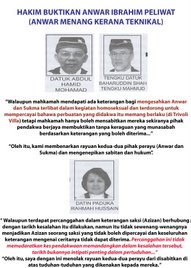
SHANGHAI: When work began on the Shanghai World Financial Center in 1997, in the headiest days of this country's economic takeoff, Shanghai was already a city that was hard to impress.
Even then, the erstwhile farmlands of Pudong District boasted two icons: the Oriental Pearl Tower, looking like a science fiction movie prop with its rocket-on-the-launching pad trunk and glittering, space-station-like orbs; and the nearby Jin Mao tower, a bejeweled spire of stacked pagodas that boasted the world's highest hotel lobby.
With competition like that, the man behind the project, the most famous Japanese real estate developer, Minoru Mori, knew he had to aim high to make his mark. And by the time of the groundbreaking it seemed as though his team had struck on the right plan.
Mori, who has a Trump-like three dozen or so buildings in Tokyo that bear his name, would offer Shanghai the world's tallest building, at 1,614 feet, or 492 meters. For extra effect, the roof of his new building would be formed by a giant enclosed circle that would house specially outfitted cars, a sort of Ferris wheel at the top of the world.
If skyscrapers can be said to have journeys, what has happened since, though, has been one long strange trip indeed. These days workers are racing to complete the 101-floor building on schedule, mounting skyward floor by floor toward a hitherto unaccustomed view that looks down on the neighboring landmarks.
But in truth, neither the schedule nor the building itself bears much resemblance to the original plans, which for many people involved may by now almost seem like a lifetime ago.
Record-breaking skyscrapers have a long and uncanny history of association with economic crisis - the Empire State Building and Rockefeller Center, for example, were both conceived in the 1920s and completed in the early years of the Great Depression - and Mori's gaudy Shanghai dream would be no exception. Within months of the groundbreaking, a financial crash struck Asia, ripping the bottom out of stock markets and real estate markets alike throughout this region.
Work was halted on the Finance Center, partly out of fears of a shortage of tenants and partly out of doubts over the unspoken premise that lay behind the project: that the Chinese economy was set to lead the world. For five long years, the huge work site sat idle, with nothing reaching skyward save for overgrown grass behind a plain cement wall.
A holding pattern like this would have been enough to sink many developers, but not Mori, for whom completing the project appears to be a point of pride.
"We are not a listed company, so we are able to control our costs very carefully," said Michiho Kishi, a spokesman for the company. "If we had been a listed company, our CEO would have been forced to resign, very simply. That's what makes us unique."
What Mori was unable to control was what would happen while his project was frozen. Five years, it turns out, is an eternity in the record-breaking skyscraper business, especially with countries all over Asia throwing their hats into the ring with new superstructures, each taller than the last.
For Shanghai's would-be title holder, the delay resulted in the building being surpassed even before it could be built, with the additional indignity that the new champion, Taipei 101, a 1,671-foot structure, was located in the capital of the diplomatic rival that China considers a renegade province, Taiwan.
But that was not the only setback. With anti-Japanese sentiment swelling in China, questions began to be asked about the Shanghai building's design.
Some said the large hole at the building's summit was suspiciously reminiscent of the sun that sits at the center of the Japanese flag, a sore point for many Chinese, who still harbor resentments over Japan's violent invasion of the country in the 1930s.
Mori's representatives gamely protested that the circle with the sky ride was based on a traditional Chinese symbol, the moon gate, but in the end they quietly backed down, replacing the hole with a squarish slot and ditching the Ferris wheel concept altogether.
But that still left them with the delicate problem that Taipei would have a taller building. Actually, not a problem at all, as visitors to the site soon discover. There, they are treated to an extravagant multimedia presentation, complete with mock-ups of the world's tallest buildings.
The Shanghai building is shown standing shoulder to shoulder with its Taiwan rival, barely but perceptibly taller, save for the other building's long antenna. In case this point is lost, amid a flood of statistics about the building's 91 elevators, or the special weights built into the 90th floor to counteract wind sway or the 10,000 office people who will eventually work here, Kishi told a visitor: "Actually if you are counting rooftop height, we are the taller building, but we are not after competition."
While diplomatic, the explanation strains credulity, especially for anyone who knows the history. The Shanghai building was originally designed to have 94 floors, rising to roughly 1,509 feet, but has quietly grown since then, with more floors added, as well as more height to each floor, resulting in about 105 extra feet.
All the one-upmanship will soon be rendered moot, however, by a far heavier hitter that is about to enter the stage: a 2,300-foot structure built in Dubai by relatives of Osama bin Laden that looks likely to hold off the competition for a good while.
On the ground, among the thousands of workers who have labored on the project, the outcome of this contest seems to matter little, though.
Amid a lunchtime scrum around sidewalk noodle vendors, Liu Xue, a pipe fitter, spoke proudly of the project. "It's a symbol of the speed of China's development," he said waving his hands animatedly as he spoke.
"It's for office workers, not people like us, and I may never come here again once it's finished. But I'll always be able to point to it, and tell my children about it."













 Malaysian Ringgit Converter
Malaysian Ringgit Converter
























No comments:
Post a Comment